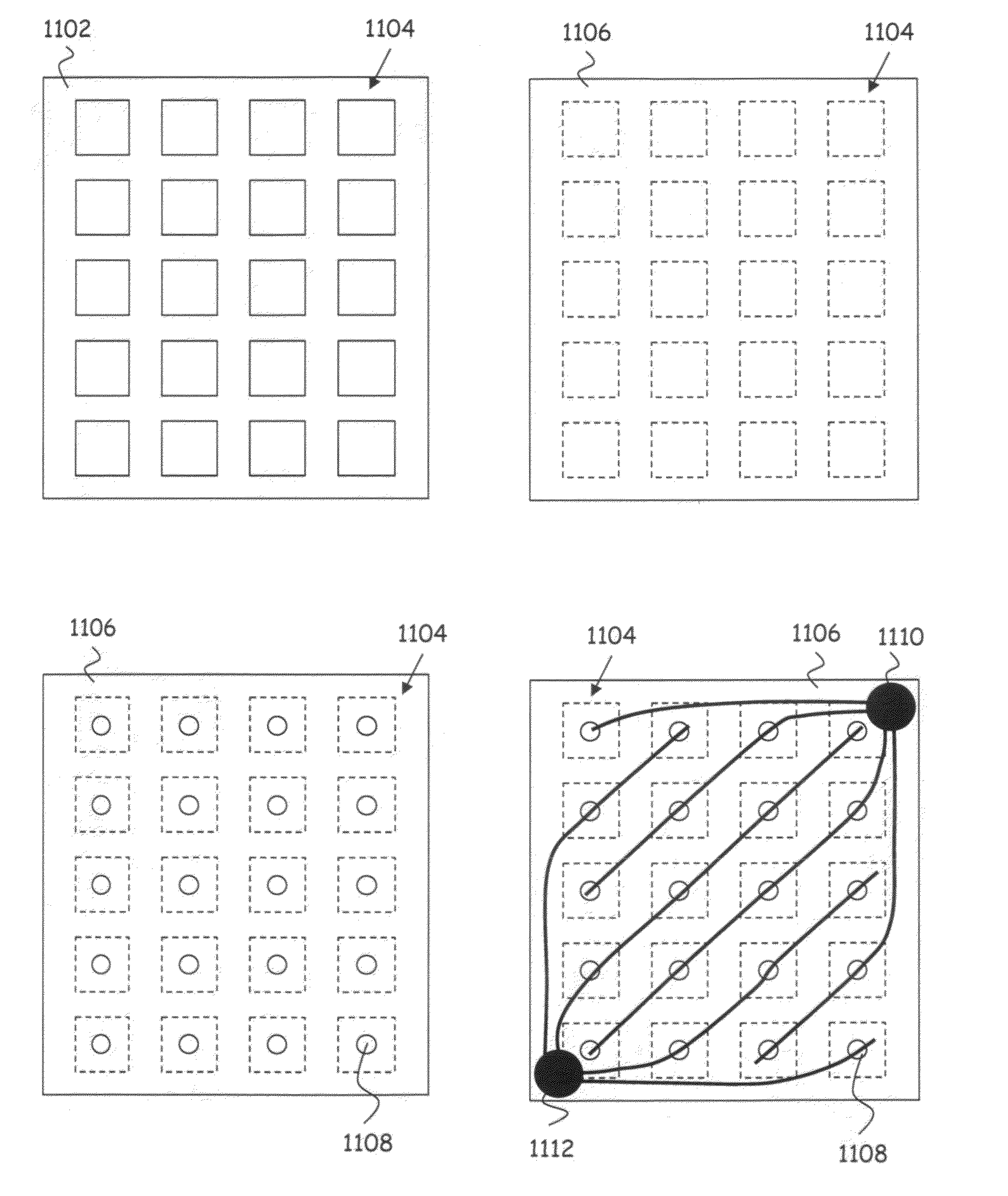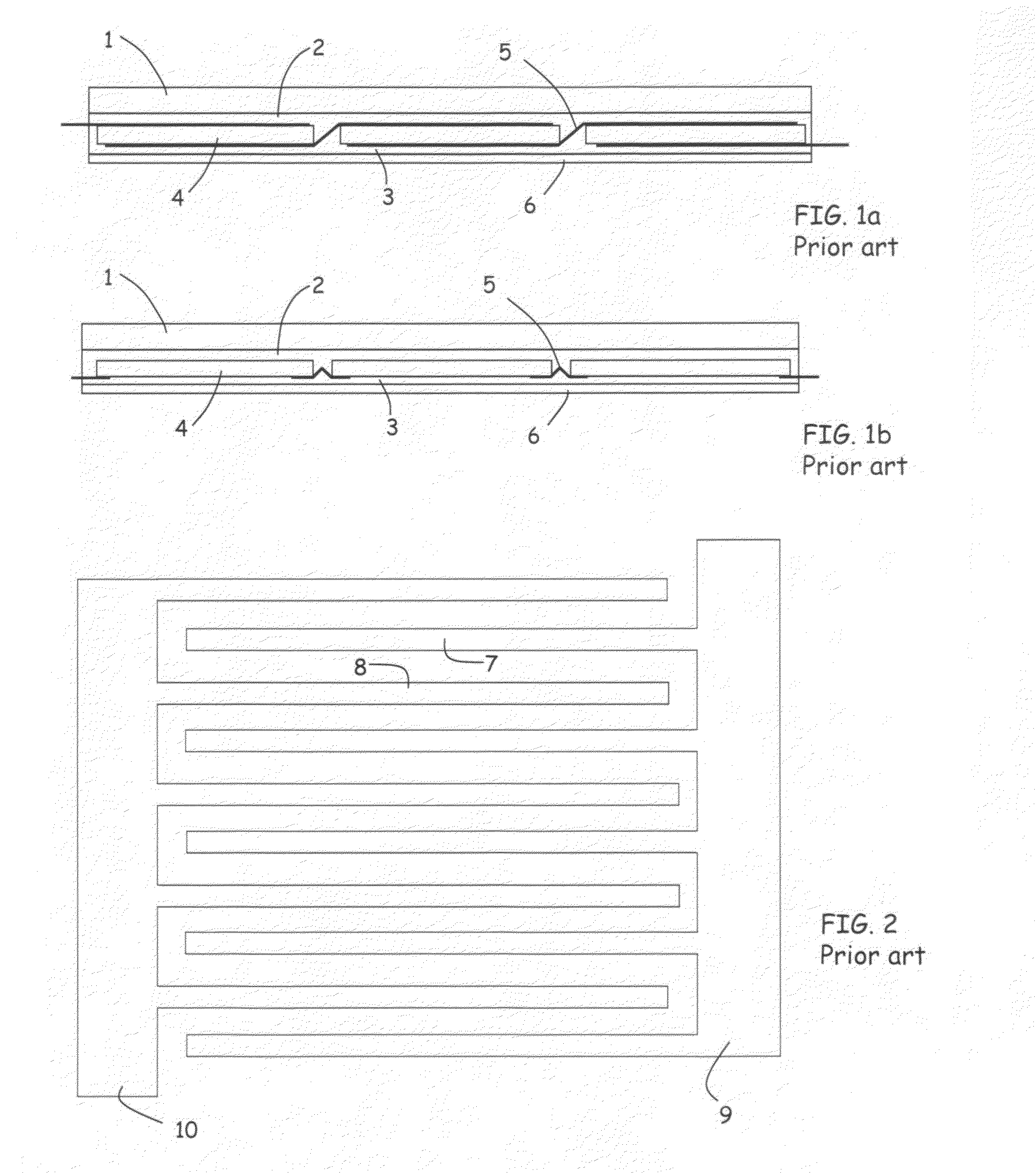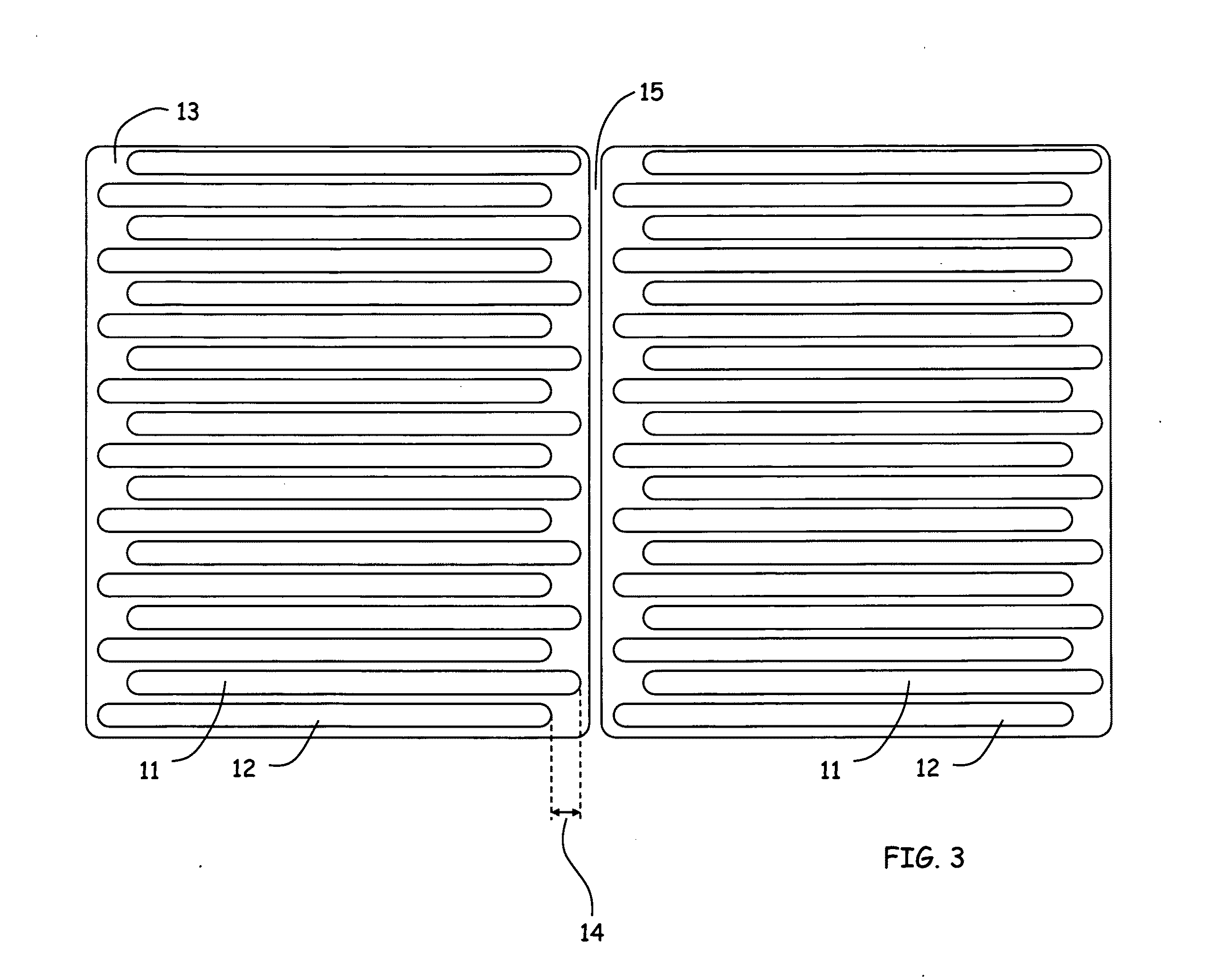Solderless back contact solar cell module assembly process
a solar cell and module technology, applied in the direction of photovoltaics, electrical equipment, semiconductor devices, etc., can solve the problems of metallization, difficult to handle without fracture, and large cost of silicon itself, and achieve the effect of less handling of fragile wafers
- Summary
- Abstract
- Description
- Claims
- Application Information
AI Technical Summary
Benefits of technology
Problems solved by technology
Method used
Image
Examples
Embodiment Construction
[0029]This invention relates to processing of thin back contact solar cell wafers into modules. The wafers should already have appropriately doped regions. Since the metal is being plated, a seed metal pattern is required. The thickness of the seed layer can be from 0.1 microns to 100 microns. The formation of the seed metal pattern can be done before or after the wafer is laminated to the front glass of the module.
[0030]While a regular interdigitated contact structure can be used, the preferred thin seed metal pattern is that of slightly shifted stripes 11, 12 as in FIG. 3. Here 15 is the seam between adjacent solar cells. Stripes of one polarity are shifted toward one edge and the other polarity toward the other edge. The amount of shifting 14 is preferably greater than 0.1 mm and less than 8 mm. The shifting makes it easier for simple printing to contact alternate stripes. The stripes, however, need not be shifted. Some printing techniques have high enough resolution, such as ink...
PUM
 Login to View More
Login to View More Abstract
Description
Claims
Application Information
 Login to View More
Login to View More - R&D
- Intellectual Property
- Life Sciences
- Materials
- Tech Scout
- Unparalleled Data Quality
- Higher Quality Content
- 60% Fewer Hallucinations
Browse by: Latest US Patents, China's latest patents, Technical Efficacy Thesaurus, Application Domain, Technology Topic, Popular Technical Reports.
© 2025 PatSnap. All rights reserved.Legal|Privacy policy|Modern Slavery Act Transparency Statement|Sitemap|About US| Contact US: help@patsnap.com



